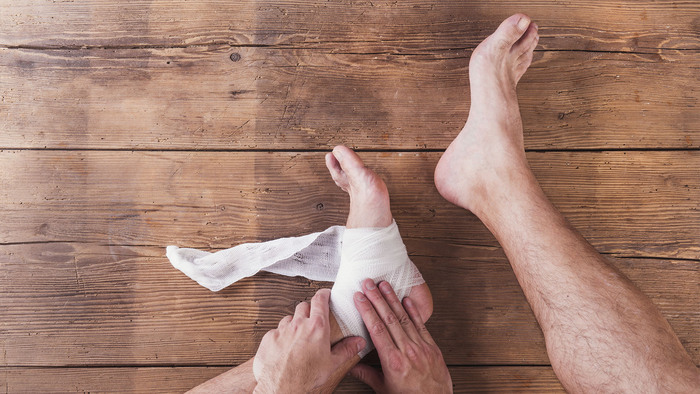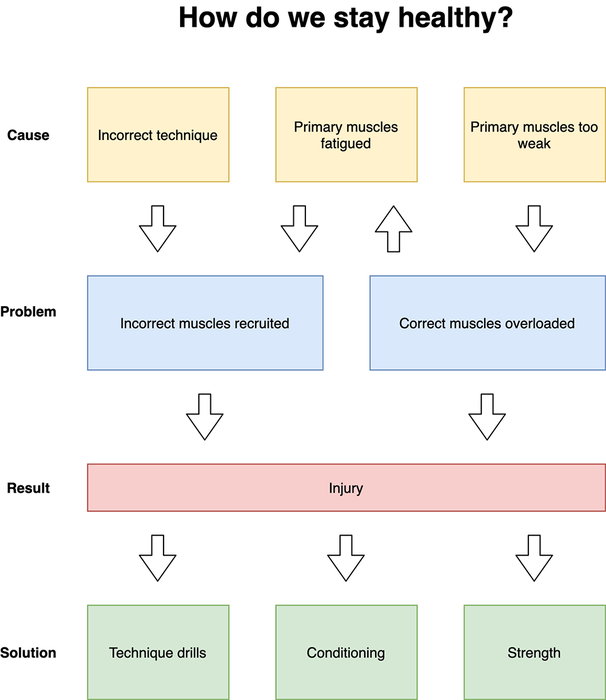Blog »
How does training prevent injury?
Published 27 September 2021. Written by Chris Worfolk.

Recently, I've been working on several programmes for ultramarathon running. One of the challenges of ultra running is that athletes are doing the same movement over and over again for hours, or even days.
This got me thinking about the fundamentals: how exactly do we keep athletes healthy, why do we do each bit of the training plan and how does it all fit together?
A typical training plan will consist of several components:
- Technique drills
- The "main set"
- Strength and conditioning
This is true whether you are training for a triathlon or whether you are focused on one discipline, such as running.
While the above terminology is typical, for endurance sports we typically do not do a lot of conditioning as a separate exercise as our "main set" is conditioning. Whether that is intervals, threshold workouts or even long endurance runs, it is all a form of conditioning.
And, when we are in the gym, it is all building strength. Therefore, a more accurate breakdown of the components of training may look like:
- Technique
- Conditioning
- Strength
Technique and conditioning are typically our main workouts (drills and a main set in the pool, for example) with strength done separately.
Why do we get injured?
If we place a too greater load on our primary muscles, they will damage. Even with perfect technique, if you have never run before then it is inadvisable to try a marathon.
Another cause of injury is ancillary muscles. If our technique is poor, or our primary muscles are too fatigued, we will recruit incorrect muscles and because we typically do not train these, they damage more easily.
Here is what that looks like in our injury model:

How does training contribute?
Let's connect this back to why we do each part of the training.
Technique drills are important because they teach us to use the correct muscles and therefore we are less likely to recruit incorrect ones. It also makes us more efficient meaning we reduce the overall load on our bodies.
Conditioning, which is our swimming, cycling and running, improves our fitness and makes our muscles more resistant to fatigue. This allows us to maintain our efficiency and correct technique for longer.
Strength facilitates correct technique and makes our muscles more resistant to overload as stronger muscles can handle a greater load.
What is not in the model?
The model is incomplete as there are several other factors we need to consider.
Recovery is key as without rest and nutrition to allow the body to repair the damage, our bodies will have a lower threshold at which they can no longer sustain the training load. However, obviously, there is limited opportunity to rest and recovery in the middle of an ultra.
Flexibility and mobility contribute to injury rates. Runners tend to be less flexible than non-runners. This could potentially give us an advantage in terms of performance (you want your bike frame to be stiff, so why not your legs?) but is not helpful in terms of avoiding injuries.
Summary
Technique, conditioning and strength all play a key part in keeping athletes healthy and avoiding injury.